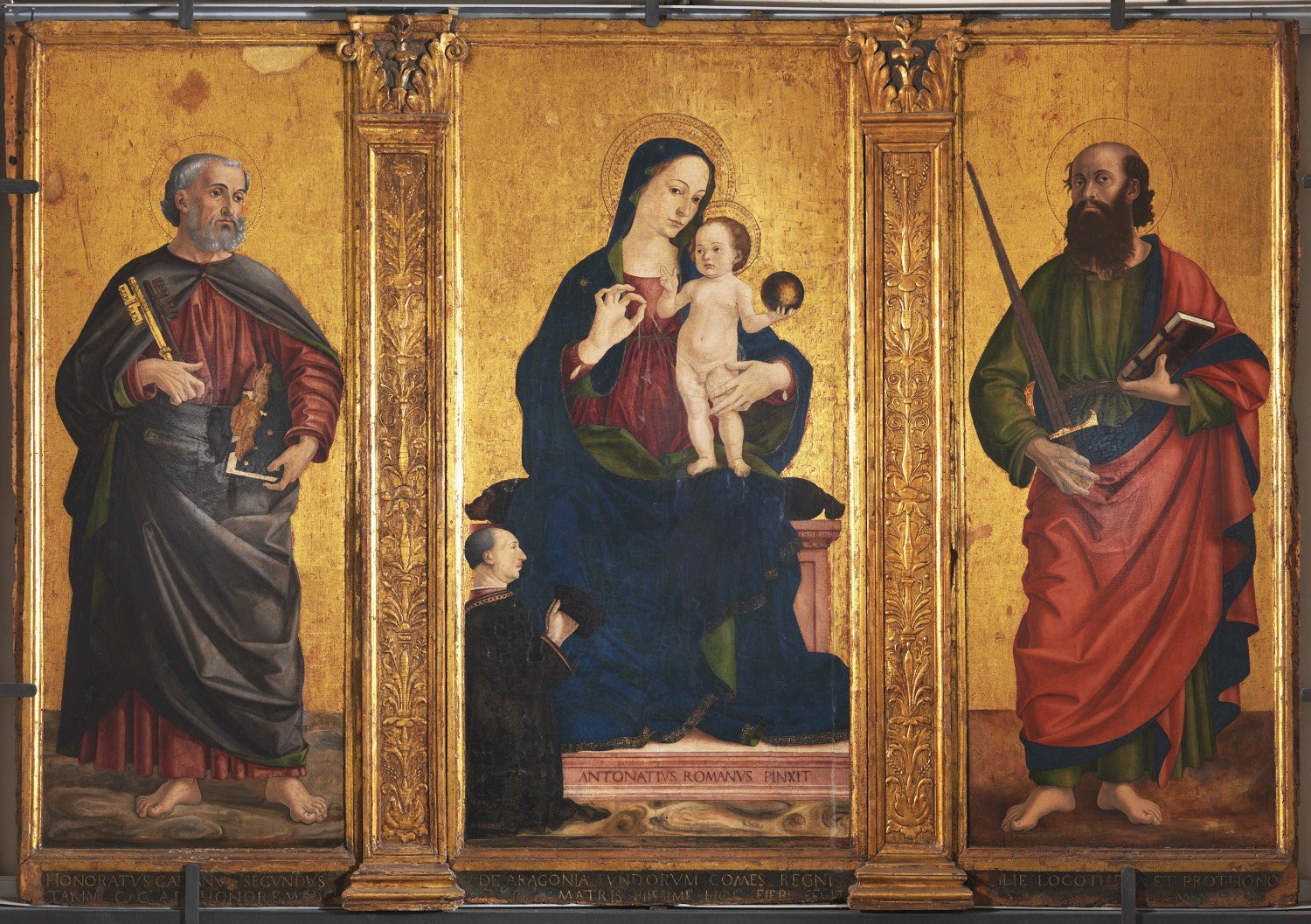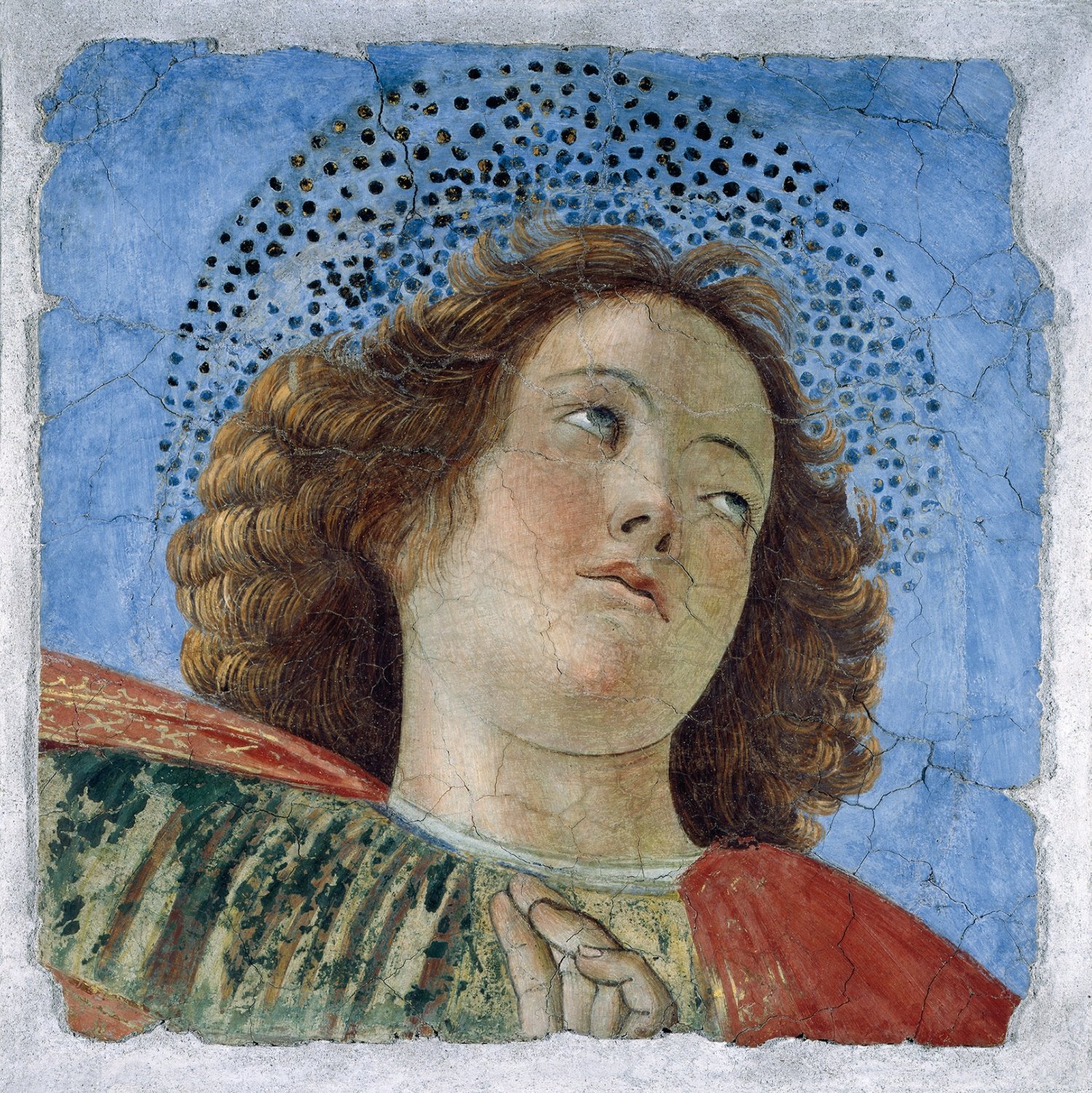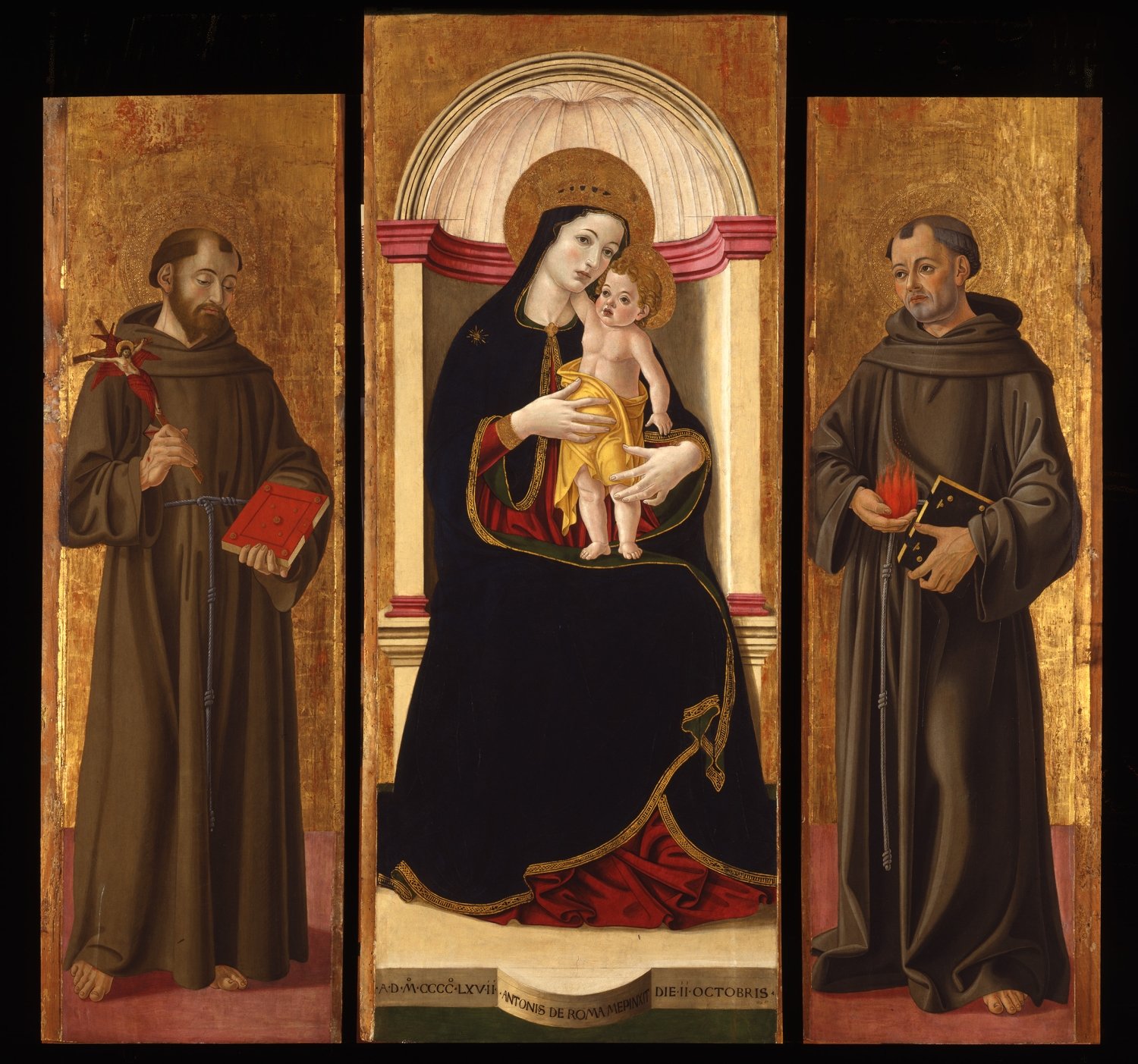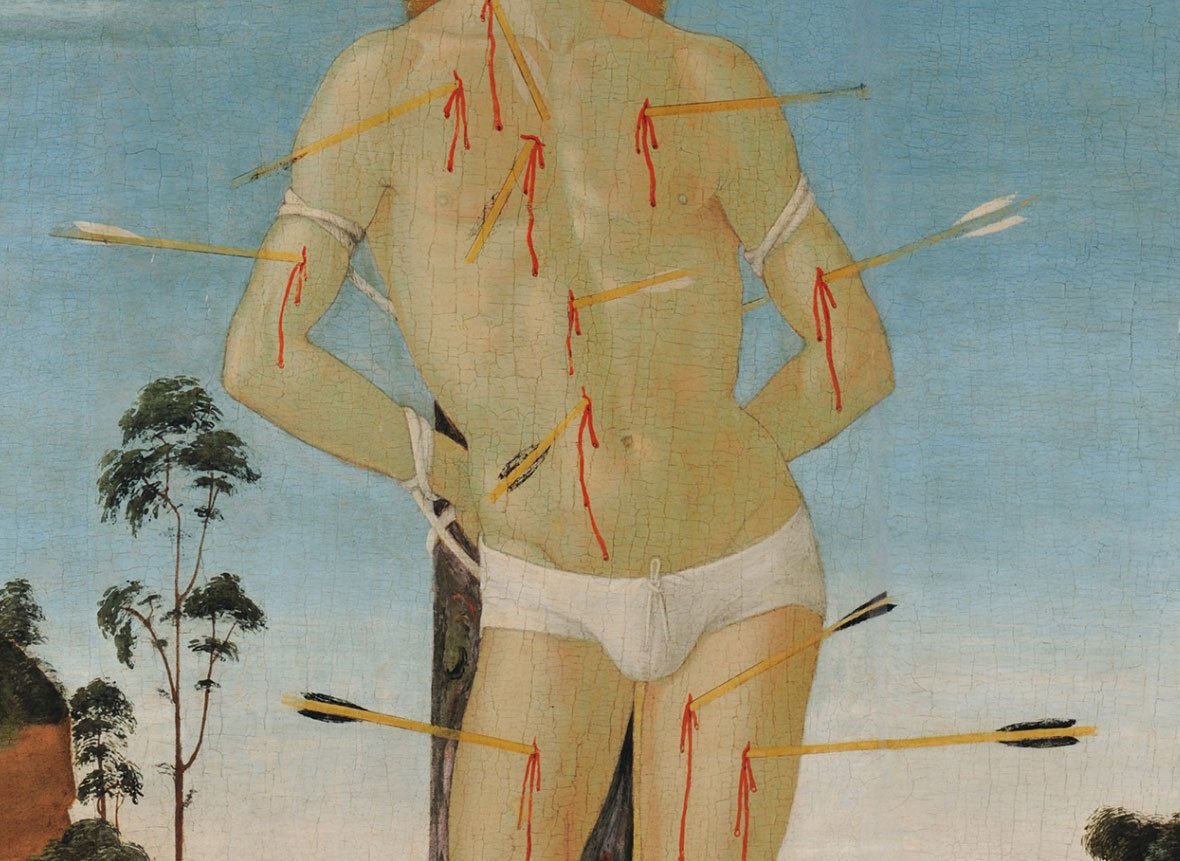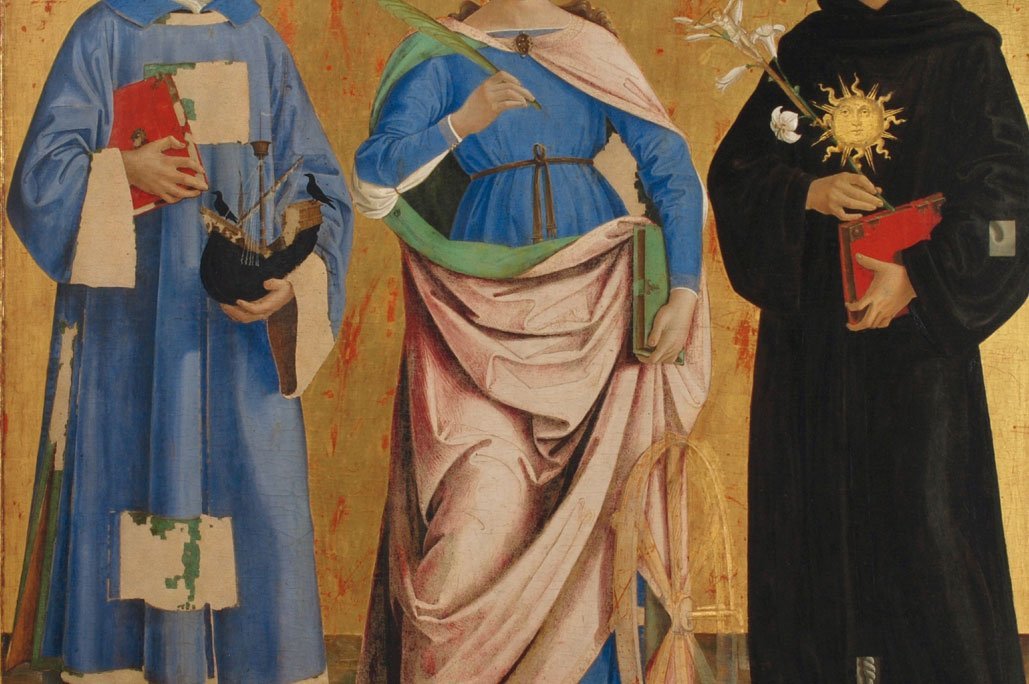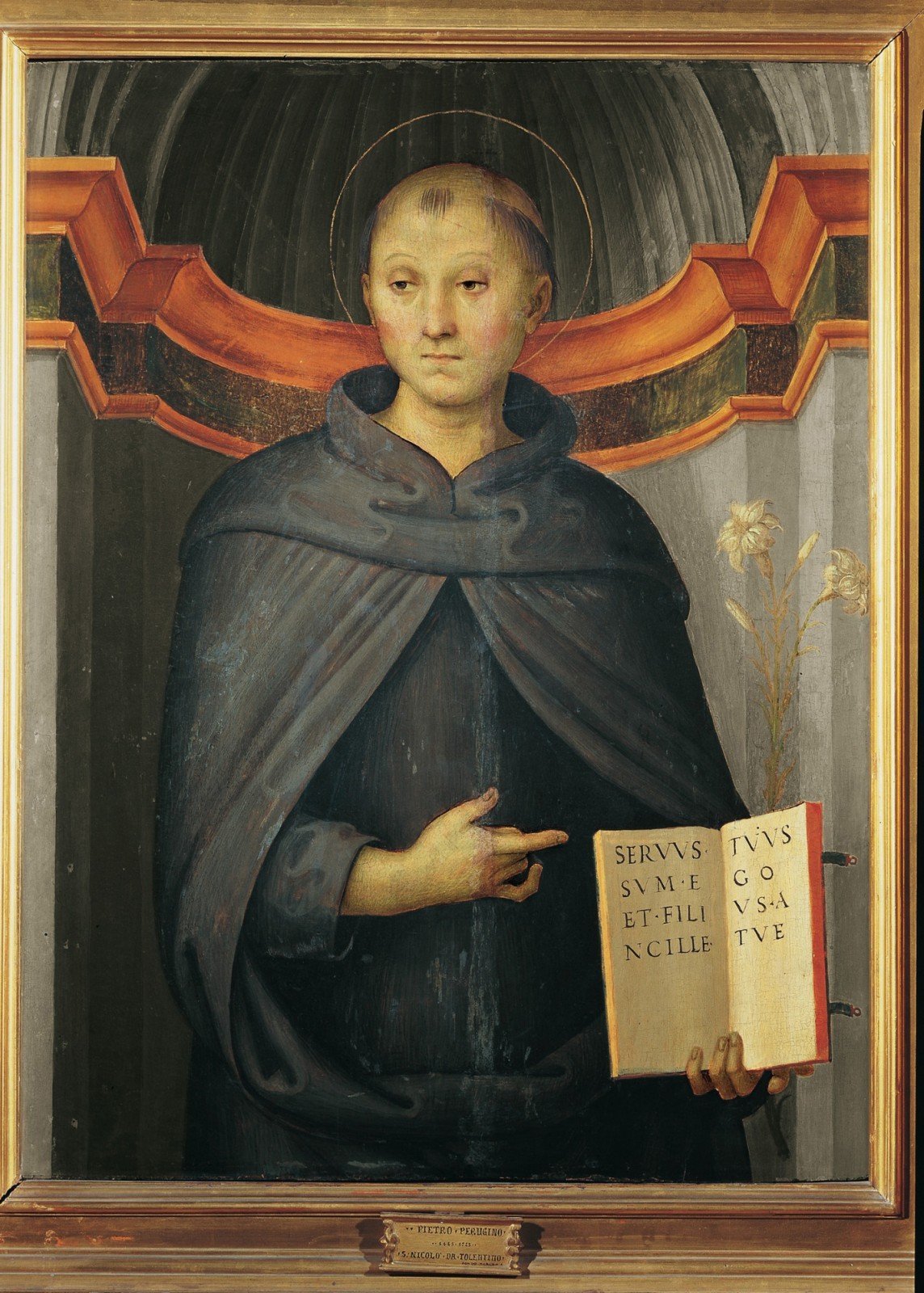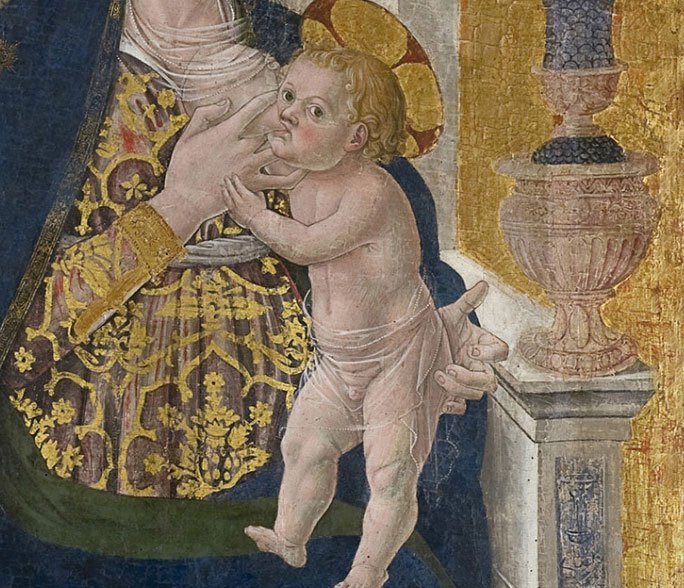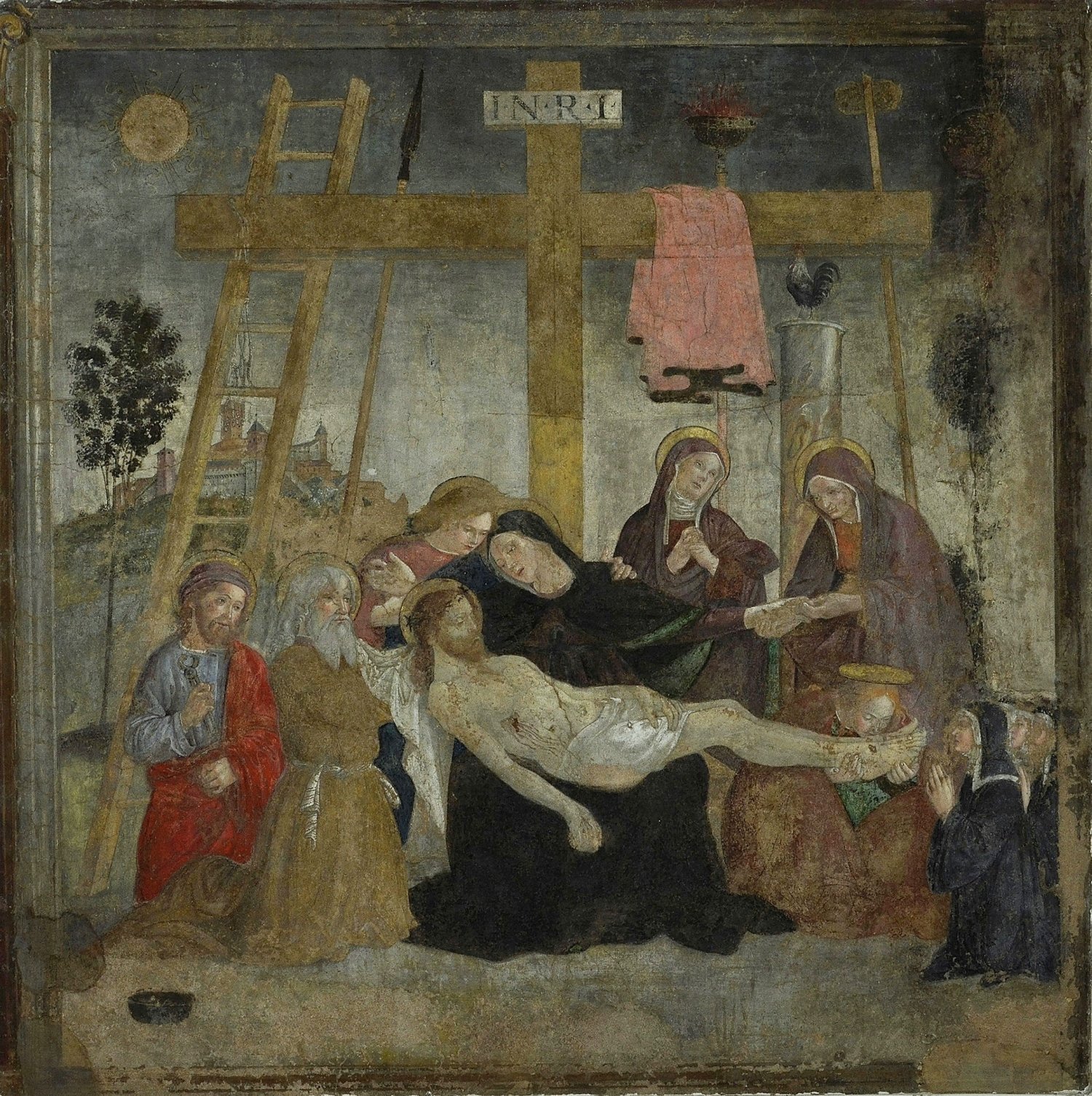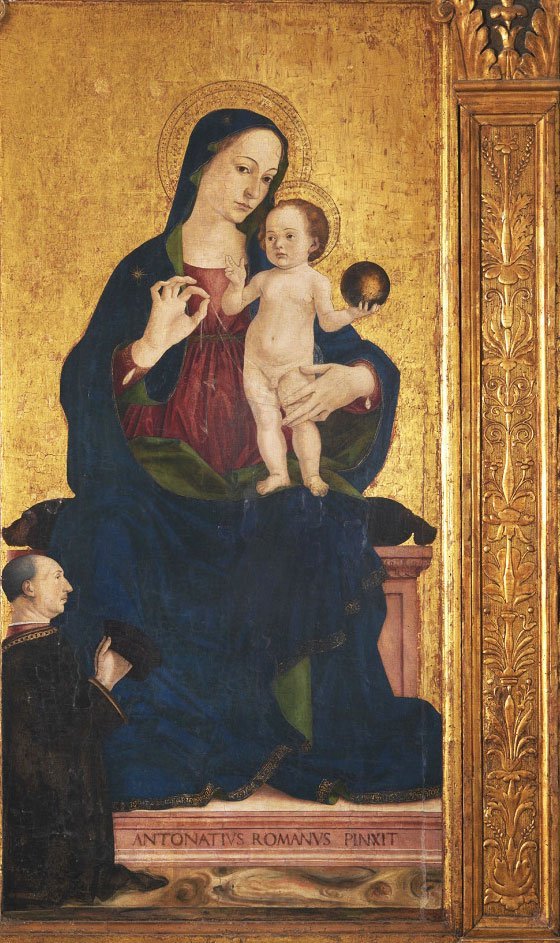Out of the tourist flock: last days to visit Antoniazzo Romano’s solo show in Rome
- Antoniazzo Romano, “Madonna and Child with Saints Pietro e Paolo and Onorato Caetani”, Fondi, Church of San Pietro
- Melozzo, “Head of an Apostle”, Città del Vaticano, Pinacoteca Vaticana
- Antoniazzo Romano, “Madonna and Child with Saints Francesco e Antonio”, Subiaco, Church of San Francesco
- Antoniazzo Romano, “Saint Sebastiano”, detail, Roma, Galleria Nazionale d’Arte Antica di Palazzo Barberini
- Antoniazzo Romano, “Saint Vincenzo, Saint Caterina, Saint Antonio da Padova”, detail, Montefalco, Museo di San Francesco
- Perugino, “Saint Nicola da Tolentino”, Roma, Galleria Nazionale d’Arte Antica di Palazzo Barberini
- Antoniazzo Romano, “Madonna and Child”, detail, 1464, Rieti, Museo Civico
- Shop of Antoniazzo Romano, “Deposition”, fresco, Roma, Convento di Sant’Ambrogio della Massima
- Antoniazzo Romano, “Madonna and Child with Saints Pietro e Paolo and Onorato Caetani”, detail, Fondi, Church of San Pietro
Antonio di Benedetto Aquilo degli Aquili better known as Antoniazzo Romano (Rome 1435/40 – 1508) was a central figure of the italian Renaissance. He was active for nearly half a century, until the first decade of the sixteenth century, in Rome and the Lazio region. The painter was a contemporary of Benozzo Gozzoli, Piero della Francesca and Domenico Ghirlandaio, all of them influential in his formation as an artist. With Melozzo da Forli, Piermatteo d’Amelia and Perugino he also shared important commissions.
His works consist of altarpieces, paintings and decorative cycles of devotion. The predilection for religious subjects depends on the fact that they were intended for an audience composed mainly of senior prelates of the Roman Curia, religious communities and members of the noble classes. Besides the subjects represented, what really strikes our attention about this author is the sophisticated language of his painting. His works, in fact, combine the splendors of medieval time together with the Renaissance innovations. In other words, he takes famous medieval icons and he revises them with the Renaissance style.
Some examples of painting by Antoniazzo and his school – he was indeed entrepreneur of a busy and industrious workshop, for several decades – can be found in many historical buildings in Rome. He was called to decorate the most important holy places in the city, from the cathedrals of the Twelve HolyApostles, San Giovanni in Laterano, Pantheon, and the Janiculum, to the churches of San Pietro in Montorio and San Onofrio
January 15, 2014

